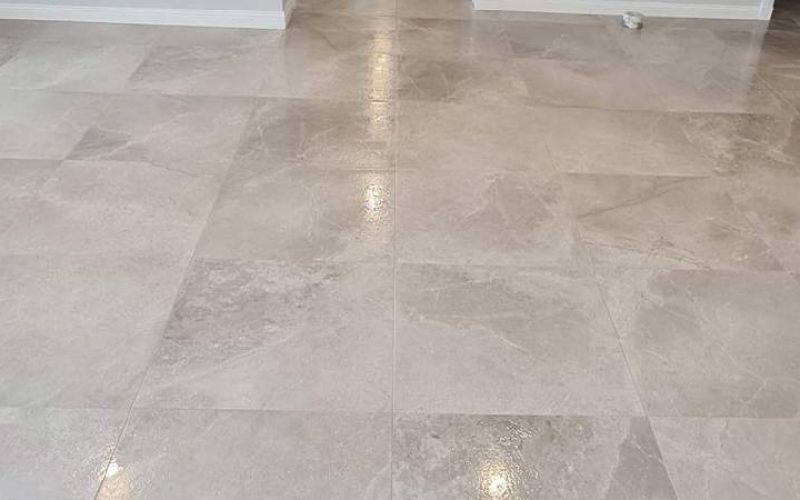Through tiling on the Sunshine Coast, we can improve the visual value of your floors and walls in many spaces. However, it would be preferable to take certain precautions to stop the tiles from deteriorating over time, especially in moist or wet regions. Before tiling, the substrate – including the wall and floor – must undergo waterproofing on the Sunshine Coast.
Although Abbott Bros focuses on bathroom renovations, tiling, and waterproofing on the Sunshine Coast can be provided by our wall and floor tiling contractors to local builders and repeat clients as separate packages.
BENEFITS OF TILING AND WATERPROOFING ON THE SUNSHINE COAST
While the low material and labour costs of paint and wallpaper may seem alluring, wall tiles’ fashionable look and long-term benefits have consumers choosing them often to embellish their houses. Most of the time, individuals need clarification about whether to place waterproof paint or tiles on walls.
- Easily maintained
- Permanent nature
- Tile flexibility
- Elegant effect
OUR PROCESS
Tiling on the Sunshine Coast
Since ceramic wall and floor tiling on the Sunshine Coast is accessible for all locations, it is economical to tile any other space. At the same time, bathroom renovations on the Sunshine Coast are also being done.
It’s time to install the tiles wherever needed after the waterproofing membrane has been installed and has had a chance to cure for a few days thoroughly. If you choose a built-in shower base, you must install the mortar bed or screed before applying the tiles.
While the process may seem straightforward, Tiling Contractors like Abbott Bros understand the nuances involved. Here’s a simplified breakdown of the key steps:
- Tiles are chosen. Based on how much slip resistance each style of tile offers, different types will likely be selected for the floor and the walls.
- The course of action they’ll take is known. It entails determining where to place the first set of tiles and how to align them with the seams in the floor and walls.
- Tiles are trimmed as required to fit their proper location.
- The tiles are then carefully fitted onto the surface using spacers to create gaps for the grout that will be used in between them once a thin set of mortar (or tile glue) has been applied.
- Tiles are given about a day to “set”; this is crucial for floor tiles since they must support a lot more weight.
- The spacers between the tiles are taken out, and grout is then used to adequately fill the spaces.
- The grout is cleansed of any leftover material and allowed to set.
Waterproofing on the Sunshine Coast
All bathrooms are required to have waterproofing. Without it, the likelihood of moulding increases, and the construction will eventually be harmed by water and moisture that leak into the wall or floor.
Waterproofing creates a barrier: Imagine it as an invisible shield protecting your walls and floors from moisture damage. Without it, even small leaks through grout or fixtures can seep into the substrate, leading to mould growth and structural damage. This is why waterproofing is sprayed in one to two coats on interior wet areas like showers, bathtubs, and floors. This liquid membrane dries into a rubber-like film, preventing water from penetrating the surface and reaching the underlying frame or foundations.
Tiling complements waterproofing: While tiles create a beautiful aesthetic, they don’t inherently prevent water infiltration. This is where tiling and waterproofing work together seamlessly. By applying tiles onto a properly waterproofed surface, you create a watertight system that can withstand spills, splashes, and even standing water.
Beyond bathrooms: This powerful combo isn’t limited to bathrooms. Exterior decks and concrete roofs also benefit from tiling and waterproofing. The same principles apply – the waterproofing membrane acts as a shield, while the tiles provide a durable and stylish finishing touch. This protects your home from mould growth, leaks, and potential structural damage.
The process: Here’s a glimpse into the process of tiling and waterproofing:
- Sealing edges and corners: Before applying the membrane, critical areas like corners and pipe penetrations are sealed with a “neutral cure” silicon sealant. This ensures compatibility and prevents damage to the membrane.
- Creating a “bond breaker: A thin polyester fabric called “polyfab” is strategically placed over these sealed areas. This acts as a decoupling layer, allowing the membrane to flex independently and preventing cracks caused by structural movement.
- Applying the membrane: The liquid rubber membrane is then applied, ensuring complete coverage underneath the edges of the polyfab for optimal adhesion.
- Tiling: Once the membrane has cured, the surface is ready for tiling. Choosing appropriate tile adhesives and grouts further enhances the watertight system.
By combining tiling and waterproofing, you create a beautiful, functional, and long-lasting space that can withstand the demands of daily life. Remember, investing in proper waterproofing today can save you from costly repairs down the road.
CONTACT US
At Abbott Bros, we can assist you with tiling or waterproofing on the Sunshine Coast. Feel free to contact us, your trusted contractor for wall and floor tiling on the Sunshine Coast, if you have any needs that were not covered above; we are confident that we can meet them effectively.
Call us right away for further information and quotes!
- Abbott Bros. is available to meet you onsite at your preferred areas. We are conveniently located at Bli Bli, Queensland, 4560
- abbottbros@ymail.com
- 0468 451 631

